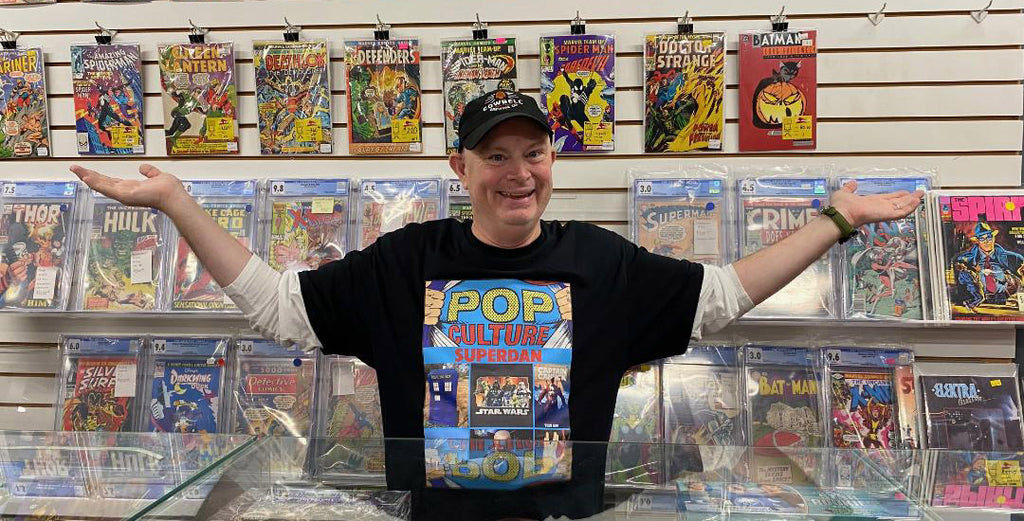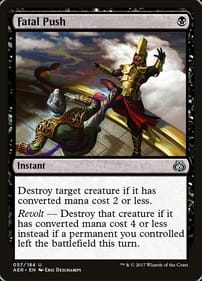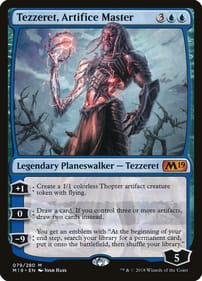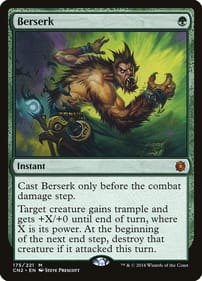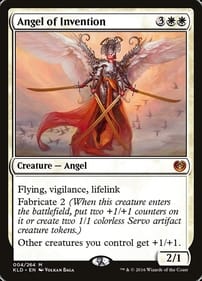Take A Graphic Trip Across Canada
By Dan Brown In honour of our national holiday, and as a way to protest the tariffs from our southern neighbours, many Canadians are travelling in their own backyard this summer. But what if you aren’t in a position to make the trek? Then take a trip across Canada – in graphic-novel form. That’s right, you can go from coast to coast to coast by reading the work produced by our dominion’s many talented comic creators. So here are suggestions for how to acquaint yourself with the regions of this great nation by looking through the comics set in those places. The East Coast: No trip to the Maritimes would be complete without a shipwreck, so let’s start our journey with Call Me Bill by London graphic novelist Lynette Richards. It’s a mystery, it’s an adventure story, it’s a reclaiming of an LGBTQ figure from the past – and it all begins with a maritime disaster off Nova Scotia, where Beal Art grad Richards lives in Terence Bay. I also recommend D.Boyd’s Denniveniquity and Chicken Rising, which cover Boyd’s formative years in Saint John, which is the city in New Brunswick – the one in Newfoundland and Labrador is St. John’s. Got it? La Belle Province: My first suggestion is Michel Rabagliati’s Paul Up North, part of which takes place during a snowstorm in Laurentian cottage country. And of course, the title character didn’t wear his winter jacket: There is no more Canadian predicament than that! As for the Montreal portion of our cross-Canada tour, I’m proposing Are You Willing to Die For the Cause?, which recounts the early years of the FLQ’s reign of error (the would-be liberators targeted Canada Post mailboxes with their homemade bombs). It was drawn and written by publishing house Drawn & Quarterly founder Chris Oliveros. Ontario outside Toronto: First stop, Jeff Lemire’s Essex County, which lovingly recreates the evocative landscape and taciturn people of Southwestern Ontario. Also recommended is Walter Scott’s Wendy, Master of Art, which is set in Hell, a small Ontario city that has an awful lot in common with Guelph. Toronto: Yes, I agree with you, there are way too many graphic novels set in Canada’s largest city. So instead of inundating you with a long list of options, I urge you to hunt down Matthew Blackett’s Wide Collar Crimes, a collection of comic strips that were published in Eye Weekly in the early 2000s. No other comic evokes the absurdities of life in Toronto like Blackett’s work does. The Prairies: So there’s Shelterbelts, set in a rural Mennonite community in Manitoba, as well as Chester Brown’s Louis Riel, which likewise attempts to capture the vastness of the landscape. I know this might be a stretch, but for Saskatchewan I recommend any Superboy adventure pencilled by artist Tom Grummet in the 1990s – in an interview at that time, he told me the wheat fields he drew near Smallville were patterned after the farms outside the window of his Saskatchewan home. Alberta: Since the tar sands are so important to Canada’s economy, you will want to check out Ducks, Kate Beaton’s account of her two years working in Northern Alberta’s oil patch. This story is not for the faint of heart, so definitely not suitable for young readers. British Columbia: Worth hunting down is the New Yorker’s cartoon edition from Dec. 28, 2020. That issue features the short graphic story Junban from Jillian Tamaki, and is adapted from her grandfather’s notes. The six-page reminiscence covers the same themes as George Takei’s They Called Us Enemy, and achingly calls to mind the Fraser River of the past. The North: Finally, we come to the land of the ice and snow! You may have an easier time getting a hold of Scott Chantler’s Northwest Passage – set in Rupert’s Land – than the anthology of Nelvana of the Northern Lights stories put out by Hope Richardson and Rachel Richey in 2014, but it’s worth it. Taken together, these two selections offer bookends of Canadian comic-book culture, starting in the Second World War with the Canadian whites and moving up to the current day with talents such as Chantler. Yes, this list is incomplete! That’s by necessity. That’s also why I’m looking for suggestions from readers like you in the comment box below. What books would you add to the list? Let’s hear them, as well as a brief description of the parts of this country they represent. And happy Canada Day! Dan Brown has covered pop culture for more than 32 years as a journalist and also moderates L.A. Mood’s monthly graphic-novel group.
Wendy Keeps Turning Bad Decisions Into Funny Art
By Dan BrownThe Wendy Award is the fourth book in Walter Scott’s hilarious Wendy series. How is it different from her previous adventures? In this one, things take a metafictional turn.If you like comics that call attention to their own constructed nature, or you just find the hot mess Wendy and her masked friend Screamo a hoot, check it out.The Wendy Award takes the piss out of arts awards, museums, land acknowledgements, corporate sponsorships, life in the COVID era, addictions, sobriety meds, Gen Z, people who go by one name, and every pretentious panel discussion ever.The premise, such as it is, is that the title character gets nominated for a prestigious art award for her autobiographical comic strip, called Wanda. You follow?It turns out the people in Wendy’s life aren’t happy with how they are portrayed in Wanda. I’ll guess the inspiration for this theme is the way Scott’s previous work has been received by his own peers and acquaintances.The contemporary art prize is sponsored by the national chain Food Hut, whose slogan is “Because you gotta eat sometime!’ The prize includes an exhibition at “the prestigious Art Factory on the Toronto waterfront.” Since I’m more than skeptical about Canada’s arts establishment, I love this kind of comedy.Her fellow nominees include Winona, Octavia, Zima and Moonstone. The last of these is described as a “relentlessly ubiquitous artist of many mediums and collaborations.”Even though she is in line for the big award, this doesn’t mean Wendy’s perennially chaotic day-to-day existence as an aspiring artist is any less turbulent than it was in her previous books. She is still a sucker for wine and cocaine, and at one point takes a side trip to New York to find herself. She’s always trying to find herself.The strip is now in Seinfeld territory – remember the story arc in which the NBC sitcom showed Jerry pitching a sitcom to NBC? The Wanda Award is kinda like that when it bends back in on itself.Wendy crashes at the apartment of her friend Tina, who isn’t happy about the intrusion. “Maybe it’ll end up in your next book!” Tina yells as she tosses our harried heroine out on the street, terminating the tense visit.There are some nice touches here, including an experiment splash page and a panel that’s an homage to the William Burroughs/David Cronenberg acid trip Naked Lunch. While in the Big Apple, Wendy enters a cinema to watch a film in which moments from her own life are being projected on the screen almost in real time, recalling such self-reflexive motion pictures as Woody Allen’s The Purple Rose of Cairo.You can feel Scott pushing the boundaries, trying to stretch himself as a graphic novelist and move the form in new directions.At another point, an upset Wendy even asks for a respite from being the title character in a comic strip. “Can you please cut away to something else for a bit?” she says directly to the reader during a vulnerable moment.Between you and me, I was unsure Wendy would be able to sustain as many books as she has. But Scott has not run out of material and now, I am more than invested in this character, who always feels she is failing at life. The joke is still funny. I am in it to the bitter end, whenever that might come.Speaking of endings, The Wendy Award concludes with a wordless epilogue in which Wendy walks out of the Art Factory, leaving the white cube behind. Is she finally forsaking the world of art for something more substantial that can make her feel whole?I look forward to finding out!! Dan Brown has covered pop culture for more than 31 years as a journalist and also moderates L.A. Mood’s monthly graphic-novel group.



